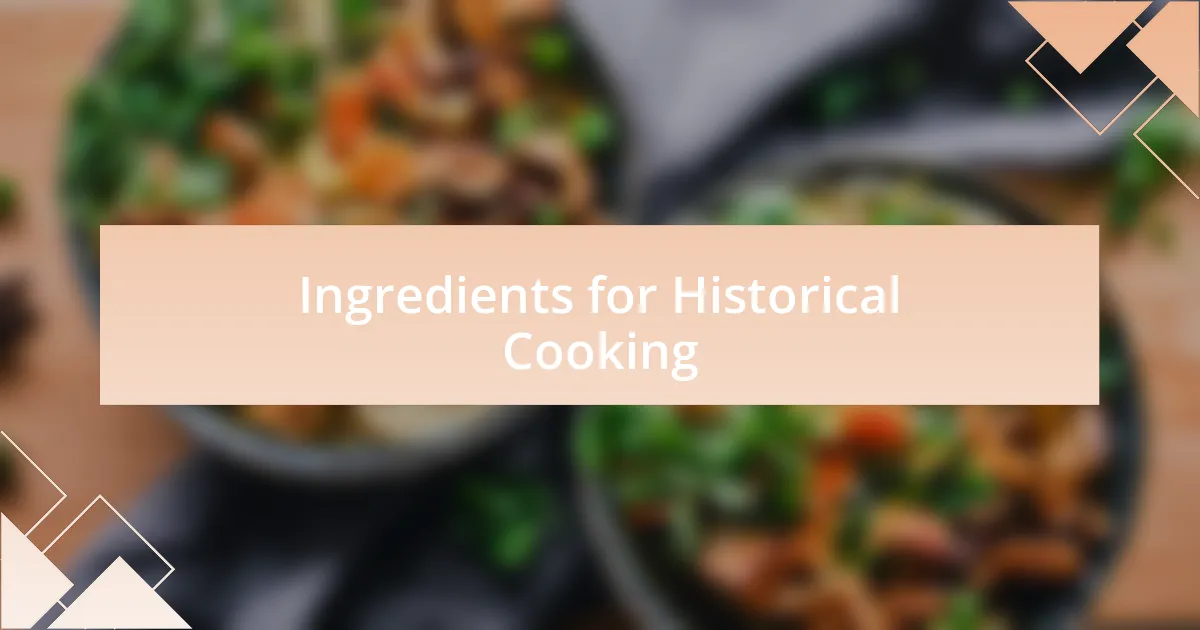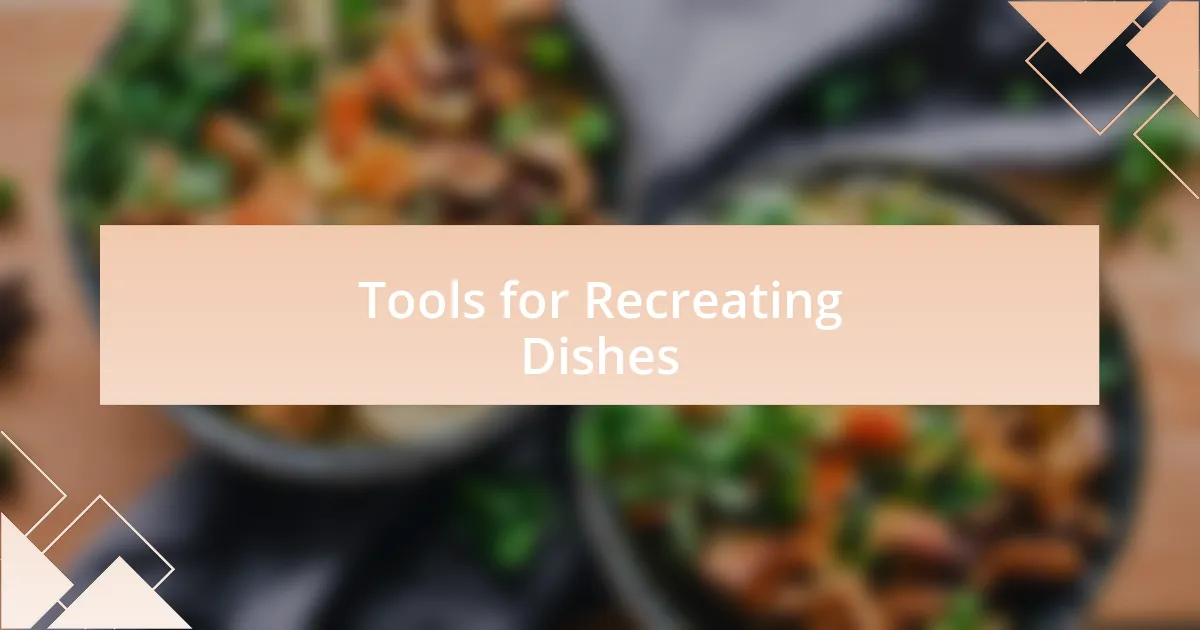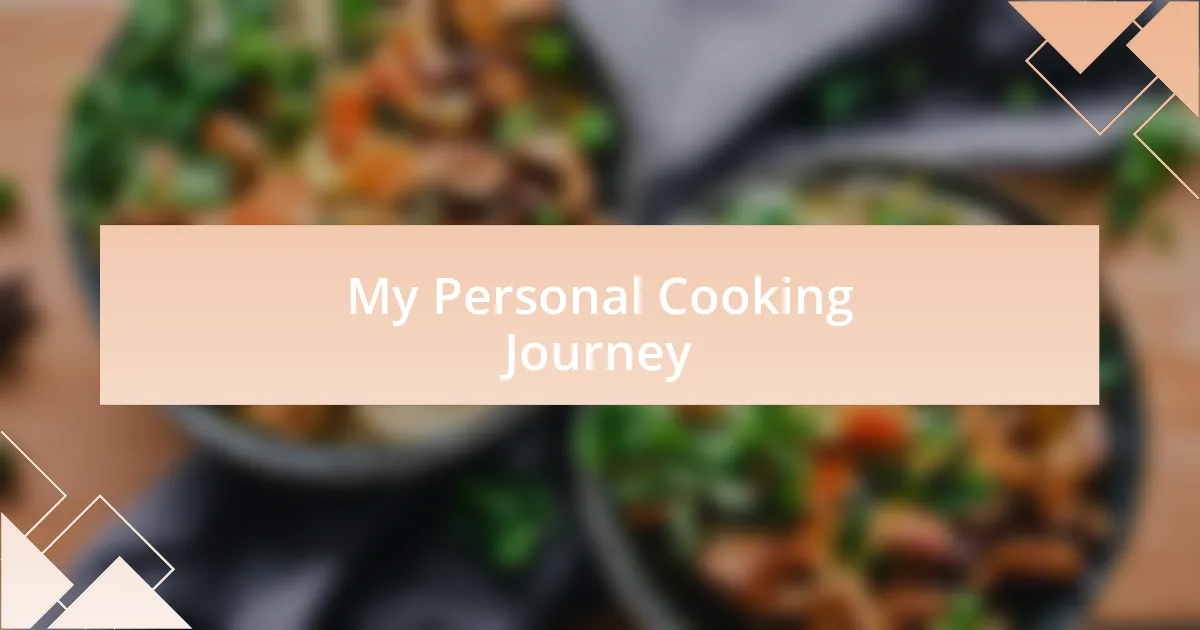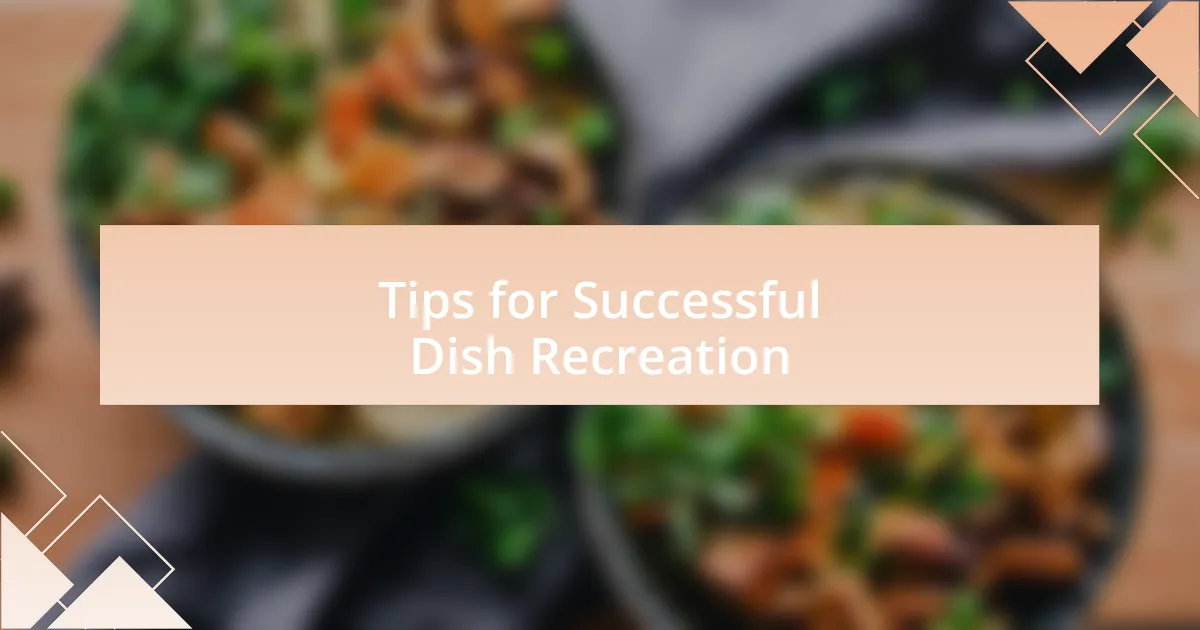Key takeaways:
- Culinary education encompasses not just cooking techniques but also the historical and cultural narratives behind dishes.
- Recreating historical dishes offers a sensory and emotional connection to the past, enhancing appreciation for cultural identity.
- Using traditional cooking techniques and sourcing authentic ingredients are crucial for achieving the true essence of historical recipes.
- Understanding the context and practicing patience in the cooking process are vital for successful dish recreation.

Understanding Culinary Education
Culinary education isn’t just about learning to cook; it’s about understanding the culture and history behind the food. I recall my first day in culinary school when the instructor shared a story about how certain dishes originated from necessity rather than luxury. Isn’t it fascinating how what we often take for granted at the dinner table has stories that stretch back through generations?
Throughout my journey, I’ve learned that culinary education opens doors to different culinary traditions and techniques. Think about it: every time I recreate a historical dish, like a medieval stew, I’m not just following a recipe; I’m stepping into the past, engaging with the experiences of those who made this meal long before us. Have you ever tried to savor the flavors of a bygone era? It truly transforms how we perceive cooking.
Moreover, understanding culinary education means appreciating the scientific principles behind cooking. I remember a moment in class when we experimented with the Maillard reaction and created the most amazing caramelization on our vegetables. What struck me was the connection between the science and the artistry of cooking. How has understanding the “why” behind cooking impacted your own culinary experiences?

Importance of Historical Dishes
Connecting with historical dishes is like holding a time capsule in your hands. When I prepared a traditional Roman dish, I felt a surge of excitement as I realized I was tasting what someone might have enjoyed thousands of years ago. This act of cooking bridges the gap between past and present, allowing us to understand the climate, geography, and social issues that influenced the food of those times. Have you ever felt that sense of connection while cooking something with a rich history?
Not only do historical dishes tell stories, but they also provide a valuable perspective on cultural identity. While experimenting with a recipe from an ancient culture, I was struck by how certain spices represented trade routes and exchanges between different civilizations. It made me appreciate not just the flavors but the journey of ingredients around the world. Isn’t it incredible how food can be a pathway to understanding diverse cultures?
Moreover, recreating these dishes can offer a sensory experience that current recipes often lack. I still remember the rich aromas wafting through my kitchen as I simmered a centuries-old recipe. Those smells transported me to another era, evoking emotions and memories I never knew were connected to food. Doesn’t it make you wonder what stories your favorite dishes might hold?

Techniques for Authentic Recipes
Embracing traditional cooking techniques truly enhances the authenticity of historical recipes. I recall the first time I ground spices with a mortar and pestle instead of using a spice grinder; the difference was palpable. The process connects you more intimately with the ingredients, allowing their individual aromas and flavors to shine through. Have you ever tried an old-fashioned method that made you feel like you stepped into another time?
Timing and temperature are also crucial for authenticity. When I attempted to recreate a medieval stew, I realized that slow cooking over an open flame changes the depth of flavor in a way that electric stoves simply can’t replicate. This experience highlighted how our modern conveniences can sometimes strip away the soul of traditional dishes. What techniques have you discovered that transform a recipe into a true representation of its origins?
Lastly, sourcing ingredients as closely as possible to those available in the original context can make a world of difference. I once sought out heirloom tomatoes for a vintage recipe, and their unique, vibrant flavors brought the dish to life. It was a remarkable reminder of how a simple ingredient can carry the weight of history. Isn’t it fascinating how much flavor and narrative can come from just selecting the right produce?

Ingredients for Historical Cooking
Finding the right ingredients is fundamental in recreating historical dishes. I remember the day I rummaged through local markets for grains used centuries ago. When I discovered ancient varieties like farro and spelt, it felt like unearthing a hidden treasure. These ingredients not only added depth but also told a story that modern products simply cannot convey. Have you ever experienced the magic of cooking with ingredients that connect you to a specific time and place?
Just as important as the rare ingredients are the everyday staples from the past. One winter afternoon, I decided to try my hand at baking a traditional bread recipe that called for sourdough starter. The process of nurturing the starter over several days brought an unexpected joy; watching it bubble and grow felt almost like cultivating a pet. I couldn’t help but wonder: how did our ancestors find the patience to work with such living ingredients?
Finally, the seasonality of ingredients plays a crucial role in authenticity. Last summer, I visited a small farm and picked fresh herbs and vegetables straight from the field, enveloped in their earthy smell. Cooking with seasonal ingredients not only enhances flavors but also honors the culinary practices of earlier times when people relied on nature’s rhythms. It makes you think, doesn’t it? How much more rewarding it is to align our cooking with the natural world around us.

Tools for Recreating Dishes
When it comes to recreating historical dishes, having the right tools is just as essential as the ingredients. I still remember the first time I used a mortar and pestle to grind spices. There’s something incredibly satisfying about the sound of ingredients being crushed and released from their shells, transforming into aromatic powders that have existed for centuries. Have you ever thought about how much these simple tools can connect us to culinary traditions?
Additionally, specific cookware can significantly impact the authenticity of a dish. A few years ago, I invested in a cast-iron skillet, which was the go-to tool in many traditional kitchens. The way it retains heat and imparts a unique flavor to whatever you’re cooking transports me back to the hearths of the past. Don’t you believe that using tools that have stood the test of time adds a little magic to the process?
There’s also a case to be made for researching historical cooking methods as part of tool selection. I once stumbled upon an old cookbook that described the use of a clay pot for slow cooking meats. Trying it out felt like stepping into a time machine; the aroma that filled my kitchen was unlike anything I had experienced before. It’s intriguing to think: how often do we overlook the connection between tools and the stories they tell in the culinary world?

My Personal Cooking Journey
I’ve always viewed cooking as a personal journey. When I first began exploring historical dishes, it quickly became clear that every recipe had a story. I remember recreating a medieval stew, closely following the ingredients listed in a centuries-old cookbook. Cooking that dish felt like piecing together a puzzle where each flavor represented a slice of history. Can you imagine diving into flavors that have been cherished for generations?
One memorable moment on my journey was when I braved making homemade pasta using only a rolling pin and a knife. I had read about how pasta-making once required skillful hands and patience. As the dough came together under my fingers, I felt a profound connection to the countless cooks who had shaped their own pasta before me. Isn’t it fascinating how such traditions connect us across time?
Another highlight was recreating dishes using forgotten techniques. One afternoon, I decided to try my hand at open-fire cooking, inspired by the way early civilizations prepared meals. The thrill of watching the flames dance while infusing my food with a smoky flavor was exhilarating. I couldn’t help but wonder: how many culinary experiences today are dampened by our reliance on modern conveniences?

Tips for Successful Dish Recreation
When recreating historical dishes, one of my top tips is to immerse yourself in the context of the recipe. I once tried my hand at a Victorian dessert called “syllabub” and learned about the significance of cream in social gatherings of that time. Understanding the cultural background helped me appreciate the flavors, turning a simple dish into an emotional experience that transcended time.
Another practical tip is to experiment with ingredient substitutions when necessary. I vividly recall my struggle to find a specific herb used in a Renaissance recipe; rather than giving up, I chose a similar herb that was more accessible. The end result was a delightful surprise that echoed the original, while allowing me to put my personal twist on the dish. Isn’t it remarkable how creativity can bridge gaps in our culinary endeavors?
Finally, I believe in the importance of patience and practice. I remember my first attempt at recreating a traditional Spanish paella; it was a culinary disaster, to say the least! Yet, with each attempt, I learned more about technique, timing, and the delicate balance of flavors. It’s a journey, and embracing the learning process is half the fun. Have you ever felt the thrill of mastering a dish after several tries?